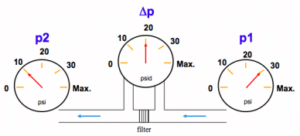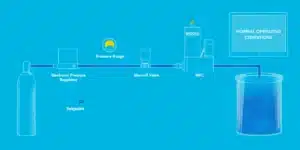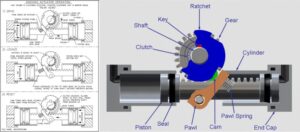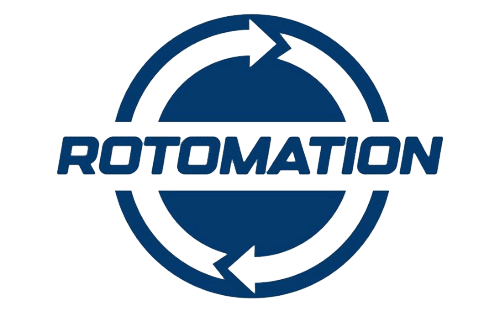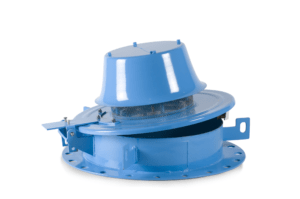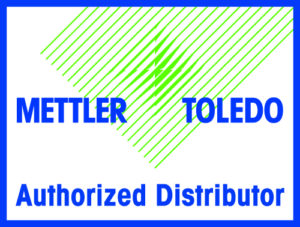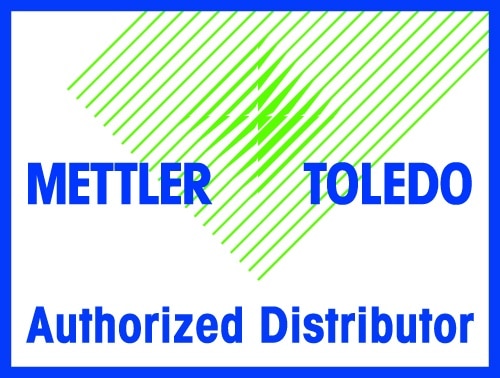An Introduction to Differential Pressure Measurement
There are three methods of measuring pressure. The most common type of pressure measurement is gauge pressure, with reference to atmospheric pressure. This is any pressure applied to the system on top of atmospheric pressure, also known as ambient pressure. A prime example of gauge pressure measurement is a car’s tire pressure.
Absolute pressure, with reference to a full vacuum, measures pressure independently of changes in atmospheric pressure. Absolute pressure measurement is used in applications where it is critical to monitor the peak of a vacuum, and is needed in laboratories, meteorology, aviation, and other fields.
Differential pressure – the third method of measuring pressure – is simply the difference between two applied pressures, often referred to as delta p (Δp). By measuring differential pressure, users are able to easily and accurately monitor filter conditions, liquid levels in closed tanks, liquid flow rates inside a pipe, and even the output torque of hydraulic motors.
Basics of a DP Gage
But why even use a differential pressure (DP) gauge? Why not just place a standard pressure gauge at the p1 and p2 measurement locations, and then have a technician work out the difference? Besides the extra time and effort required for manual calculations, a DP gauge is superior for several reasons:
- Sensitivity. Differential pressure gauges are designed to detect minute differences that the human eye cannot see. As an example, let’s put two standard gauges on either side of a filter. Both pointers might indicate 100 psi, but a DP gauge would be sensitive enough to pick up a difference of as low as 10″ H2O (inches water column), or 0.36 psi. A differential pressure gauge indicates only the Δp; it basically eliminates all the unnecessary “noise.”
- Range. The range of a differential pressure gauge can go as low as 0.2″ H2O for air handling systems and as high as 15,000 psi with a Bourdon tube DP gauge. Even at very low differential pressure ranges, the DP gauge must be rugged enough to withstand very high working pressures.
- Working pressure. Besides the differential pressure range, the maximum working pressure is very critical. Without knowing the working pressure, we cannot determine the correct DP gauge for the application. The working pressure in almost every DP application is significantly higher than the actual DP range.
- Options. Differential applications often require different pressure port positions, additional pressure ports, and different process connections than the typical ¼” or ½” NPT male thread used on standard gauges. For liquid level measurements, a combined top/bottom connection (total of four pressure ports) in combination with a ¼” NPT female thread can be the norm. For filter applications, in-line connections (also known as end connections) are typical, and to measure the low pressure in air handling systems, a hose barb connection is the one most often used. There are also many options for units of measurement other than just psi, bar, and inches of water column. If measuring content in liquid level applications, users can choose among scales that read in pounds, kilograms, or gallons. In flow applications, differential pressure gauges often read in SCFM (standard cubic feet per minute), GPM (gallons per minute), m³/s (cubic meters per second), etc. And in aviation, using pitot tubes, a differential pressure gauge measures airspeed in knots or miles.
Applications for Differential Pressure Measurement
Differential pressure measurement goes beyond regular pressure measuring. Indeed, this type of pressure measurement is the means by which many industries monitor filter conditions, liquid level, liquid flow rate, and torque output.
1. Filter monitoring
This is the most common application for differential pressure measurement, used in industrial oil filter applications, air filter monitoring in gas turbines, and filter monitoring – such as membrane sensing – in water/wastewater facilities. As the filter becomes clogged, the differential pressure increases.
2. Liquid level measurement
In an open vessel where nothing is pressurized, a simple pressure gauge is sufficient for calculating the liquid level. But in a sealed tank with liquid and gas phases, the only way to monitor that liquid level is to deduct the low-pressure side (gas or vapor) from the high-pressure side (liquid).
3. Flow measurement
A primary flow element, such as an orifice plate, flow nozzle, Venturi tube or Venturi nozzle, creates a constriction from a larger upstream diameter to a smaller downstream diameter. This constriction in a pipe causes a pressure drop that is proportional to the square of the flow rate. Using Bernoulli’s equation, one can relate the differential pressure of the fluid with its flow velocity. Thus, the combination of a differential pressure gauge and a primary flow element creates a reliable flow meter.
4. Drill head monitoring
In hydraulic systems, a Bourdon tube-type DP gauge can be used for measuring the output torque of positive displacement motors. The gauge measures the pressure drop of the motor powering the gearbox by simultaneously measuring the pressure on the pressure and return sides of equipment during operation. By measuring the pressure drop, the DP gauge calculates the amount of torque that the hydraulic motor generates.
If you’re unsure which type of pressure measurement is right for your particular application, the experts at Cross Process Solutions can help. We have decades of experience measuring pressure, flow and more in industrial applications. Contact us today to learn more.


